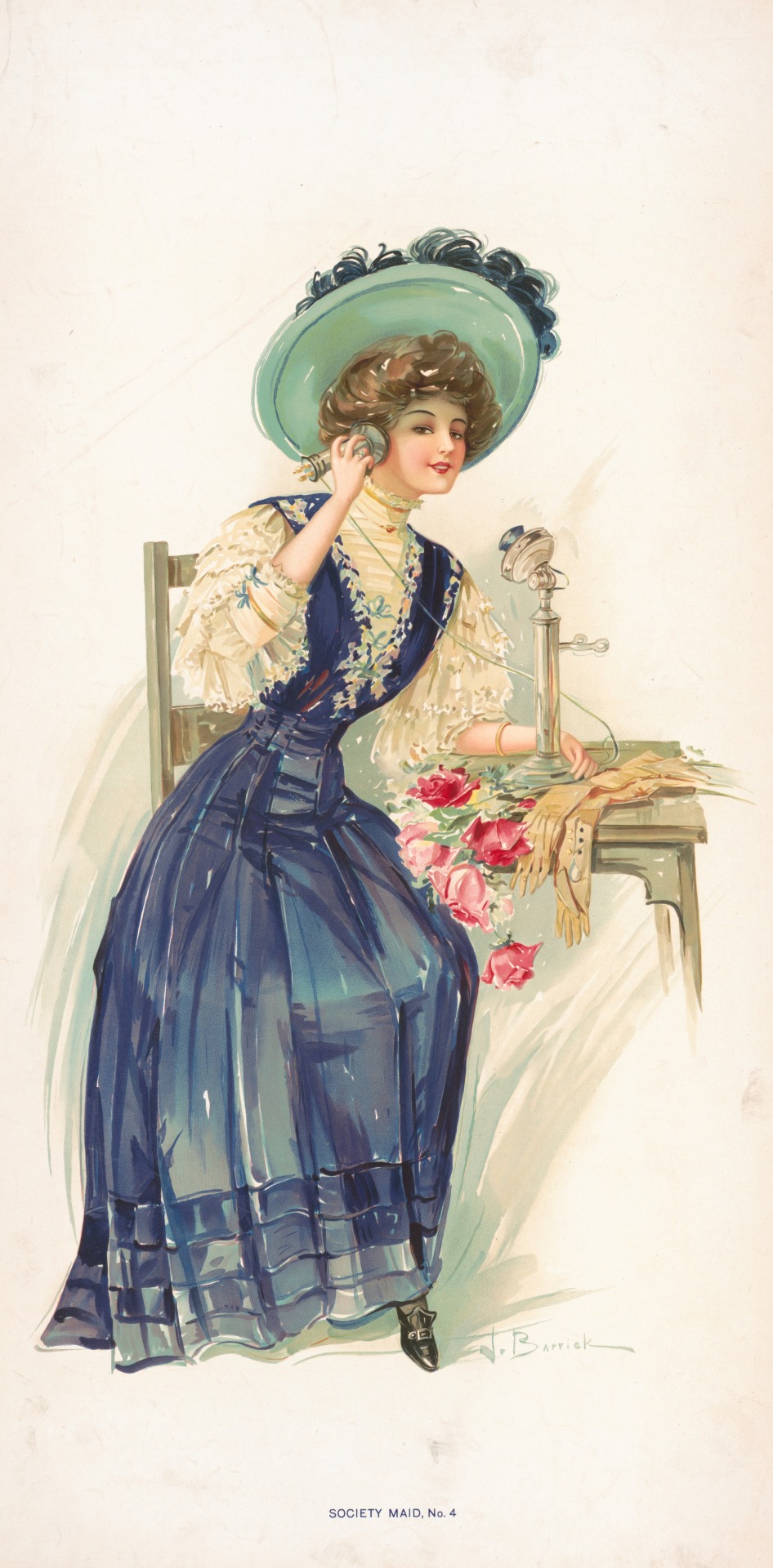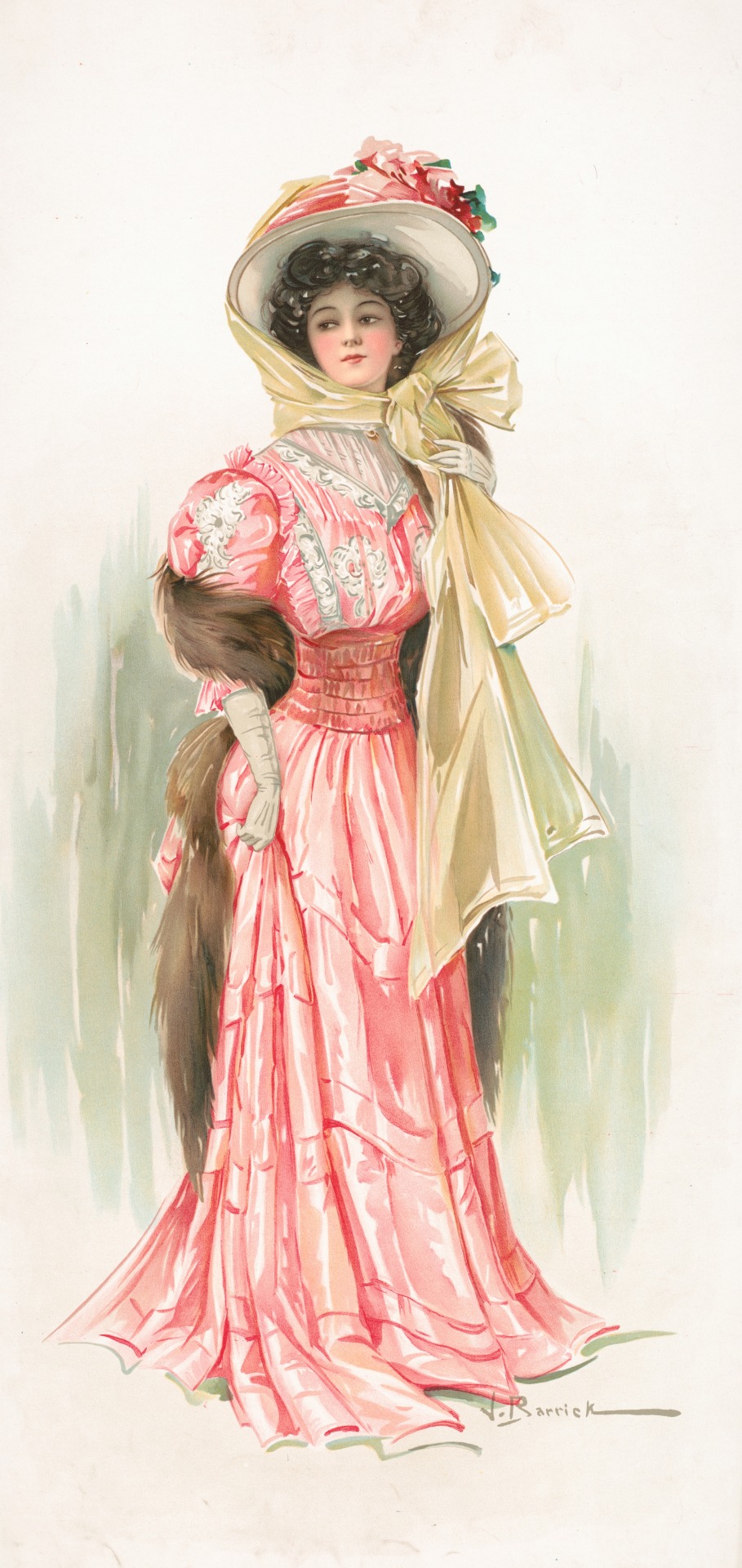Text


"Old Town Square at Night" by Józef Pankiewicz (1892) vs the same place on November 28th 2023 (Warsaw)
13K notes
·
View notes
Text

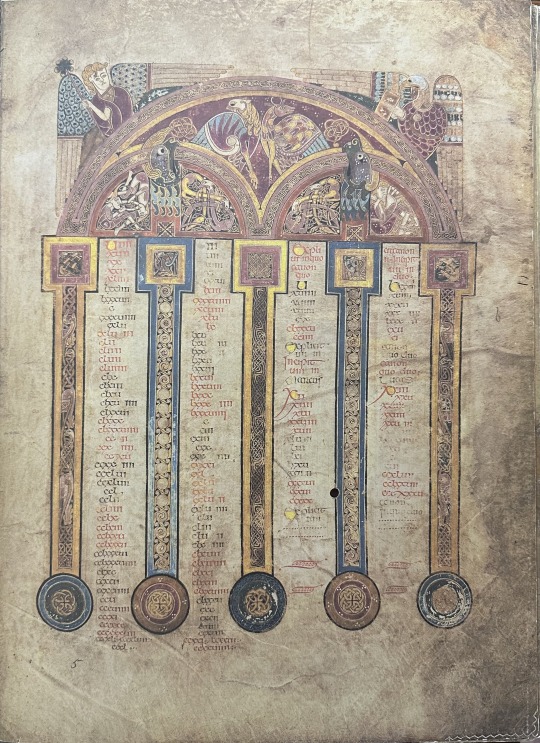



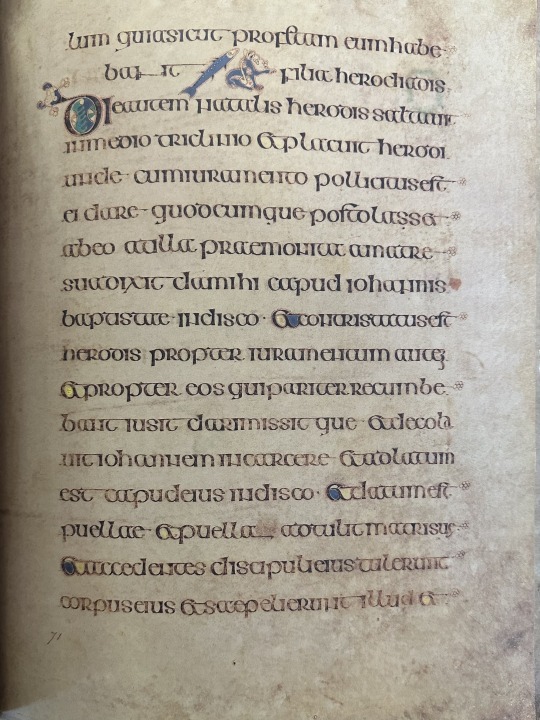

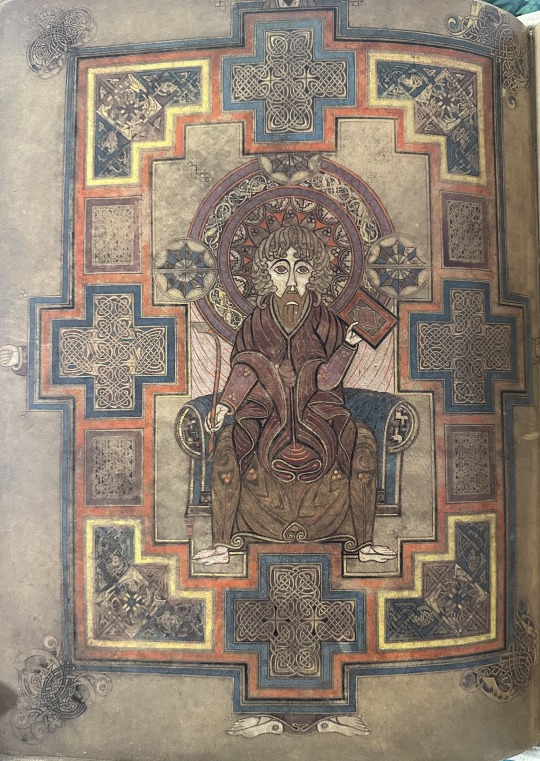
Manuscript Monday
This Insular manuscript was created by Irish Catholics, who were well known to be stewards of knowledge and artistic ability during the ‘dark ages’ of the 6th-10th centuries CE. In particular, the Insular style consists of flattened, two-dimensional figures of people and animals accompanied by elaborate ornamentation throughout its pages. We often see interlacing designs and Celtic knots within this ornamentation and the proportions and rendering of the figures and architecture seen throughout the manuscript are not always realistic. For example, in the Book of Kells, produced around 800 CE by Irish monks in Scottish west-coast island of Iona, the columns holding up the arches on canon tables are circular and would lack structural integrity in the real world, for obvious reasons. We can see the flattened, strange rendering of figures on folio 32v (shown below), which is a depiction of Christ Enthroned. Christ’s knee is lifted to hold up the codex in his hand, but the placement of his knee is anatomically incorrect. We also see the flatness of the figure and the inclusion of ornamentation throughout the image, and we can see even more of this decoration on carpet pages throughout the manuscript. The Insular style was not only limited to manuscripts but was also used in metal objects like broaches, chalices, sculpture, and architecture which are also said to have been inspiration for Insular style manuscripts.

Our copy of the facsimile of the Book of Kells was published by the Faksimile Verlag of Luzern, Switzerland in 1990 and includes a separate volume with commentary edited by the noted Trinity College librarian Peter Fox. If you have the urge to see the original Book of Kells, it is shown in the Trinity College Library in Dublin. The library shows two folios of the manuscript at a time and changes the pages shown every twelve weeks.
View more Manuscript Monday posts.
– Sarah S., Special Collections Graduate Intern
67 notes
·
View notes
Text

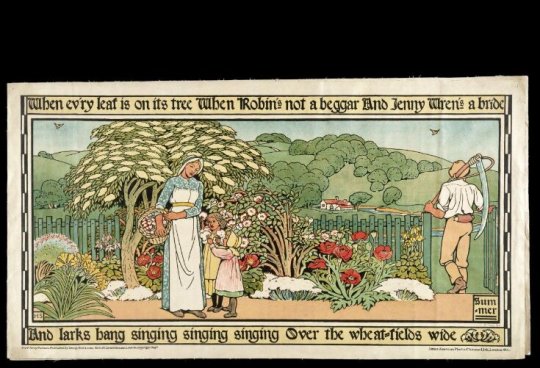
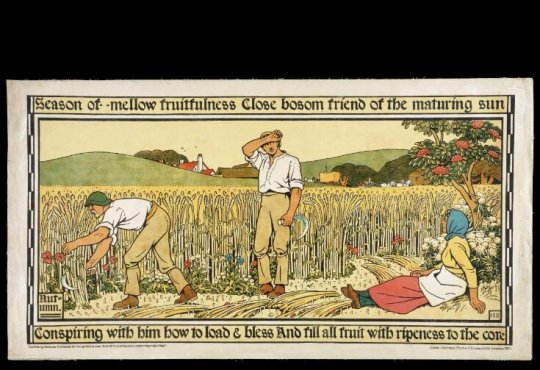
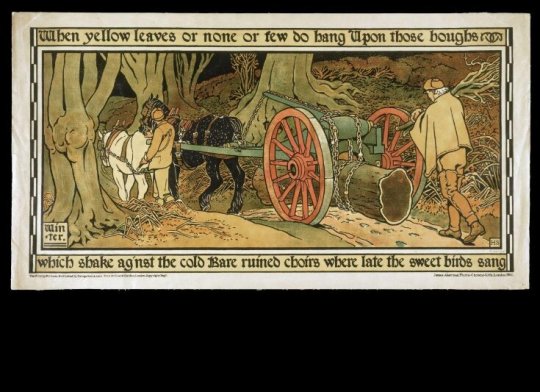
The seasons - poster designs (1893) by George Heywood Maunoir Sumner.
Chromolithographs by James Akerman.
© Victoria and Albert Museum, London, 2023.
226 notes
·
View notes
Text
hey followers. have you ever wanted to know how it feels to be inside a bag of cornflakes
229K notes
·
View notes
Text
I was meeting a client at a famous museum’s lounge for lunch (fancy, I know) and had an hour to kill afterwards so I joined the first random docent tour I could find. The woman who took us around was a great-grandmother from the Bronx “back when that was nothing to brag about” and she was doing a talk on alternative mediums within art.
What I thought that meant: telling us about unique sculpture materials and paint mixtures.
What that actually meant: an 84yo woman gingerly holding a beautifully beaded and embroidered dress (apparently from Ukraine and at least 200 years old) and, with tears in her eyes, showing how each individual thread was spun by hand and weaved into place on a cottage floor loom, with bright blue silk embroidery thread and hand-blown beads intricately piercing the work of other labor for days upon days, as the labor of a dozen talented people came together to make something so beautiful for a village girl’s wedding day.
What it also meant: in 1948, a young girl lived in a cramped tenement-like third floor apartment in Manhattan, with a father who had just joined them after not having been allowed to escape through Poland with his pregnant wife nine years earlier. She sits in her father’s lap and watches with wide, quiet eyes as her mother’s deft hands fly across fabric with bright blue silk thread (echoing hands from over a century years earlier). Thread that her mother had salvaged from white embroidery scraps at the tailor’s shop where she worked and spent the last few days carefully dying in the kitchen sink and drying on the roof.
The dress is in the traditional Hungarian fashion and is folded across her mother’s lap: her mother doesn’t had a pattern, but she doesn’t need one to make her daughter’s dress for the fifth grade dance. The dress would end up differing significantly from the pure white, petticoated first communion dresses worn by her daughter’s majority-Catholic classmates, but the young girl would love it all the more for its uniqueness and bright blue thread.
And now, that same young girl (and maybe also the villager from 19th century Ukraine) stands in front of us, trying not to clutch the old fabric too hard as her voice shakes with the emotion of all the love and humanity that is poured into the labor of art. The village girl and the girl in the Bronx were very different people: different centuries, different religions, different ages, and different continents. But the love in the stitches and beads on their dresses was the same. And she tells us that when we look at the labor of art, we don’t just see the work to create that piece - we see the labor of our own creations and the creations of others for us, and the value in something so seemingly frivolous.
But, maybe more importantly, she says that we only admire this piece in a museum because it happened to survive the love of the wearer and those who owned it afterwards, but there have been quite literally billions of small, quiet works of art in billions of small, quiet homes all over the world, for millennia. That your grandmother’s quilt is used as a picnic blanket just as Van Gogh’s works hung in his poor friends’ hallways. That your father’s hand-painted model plane sets are displayed in your parents’ livingroom as Grecian vases are displayed in museums. That your older sister’s engineering drawings in a steady, fine-lined hand are akin to Da Vinci’s scribbles of flying machines.
I don’t think there’s any dramatic conclusions to be drawn from these thoughts - they’ve been echoed by thousands of other people across the centuries. However, if you ever feel bad for spending all of your time sewing, knitting, drawing, building lego sets, or whatever else - especially if you feel like you have to somehow monetize or show off your work online to justify your labor - please know that there’s an 84yo museum docent in the Bronx who would cry simply at the thought of you spending so much effort to quietly create something that’s beautiful to you.
26K notes
·
View notes
Text
“It was language I loved, not meaning. I liked poetry better when I wasn’t sure what it meant. Eliot has said that the meaning of the poem is provided to keep the mind busy while the poem gets on with its work —like the bone thrown to the dog by the robber so he can get on with his work…Is beauty a reminder of something we once knew, with poetry one of its vehicles? Does it give us a brief vision of that ‘rarely glimpsed bright face behind/ the apparency of things’? Here, I suppose, we ought to try the impossible task of defining poetry. No one definition will do. But I must admit to a liking for the words of Thomas Fuller, who said: ‘Poetry is a dangerous honey. I advise thee only to taste it with the Tip of thy finger and not to live upon it. If thou do'st, it will disorder thy Head and give thee dangerous Vertigos.”
— P.K. Page, The Filled Pen: Selected Non-Fiction
(via mesogeios)
750 notes
·
View notes
Text
I got to hold a 500,000 year old hand axe at the museum today.
It's right-handed
I am right-handed
There are grooves for the thumb and knuckle to grip that fit my hand perfectly
I have calluses there from holding my stylus and pencils and the gardening tools.
There are sharper and blunter parts of the edge, for different types of cutting, as well as a point for piercing.
I know exactly how to use this to butcher a carcass.
A homo erectus made it
Some ancestor of mine, three species ago, made a tool that fits my hand perfectly, and that I still know how to use.
Who were you
A man? A woman? Did you even use those words?
Did you craft alone or were you with friends? Did you sing while you worked?
Did you find this stone yourself, or did you trade for it? Was it a gift?
Did you make it for yourself, or someone else, or does the distinction of personal property not really apply here?
Who were you?
What would you think today, seeing your descendant hold your tool and sob because it fits her hands as well?
What about your other descendant, the docent and caretaker of your tool, holding her hands under it the way you hold your hands under your baby's head when a stranger holds them.
Is it bizarre to you, that your most utilitarian object is now revered as holy?
Or has it always been divine?
Or is the divine in how I am watching videos on how to knap stone made by your other descendants, learning by example the way you did?
Tomorrow morning I am going to the local riverbed in search of the appropriate stones, and I will follow your example.
The first blood spilled on it will almost certainly be my own, as I learn the textures and rhythm of how it's done.
Did you have cuss words back then? Gods to blaspheme when the rock slips and you almost take your thumbnail off instead? Or did you just scream?
I'm not religious.
But if spilling my own blood to connect with a stranger who shared it isn't partaking in the divine
I don't know what is.
72K notes
·
View notes
Text
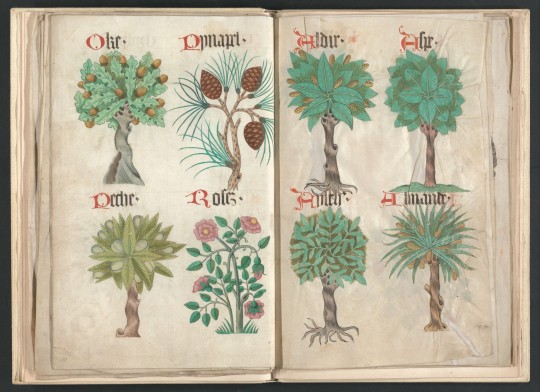
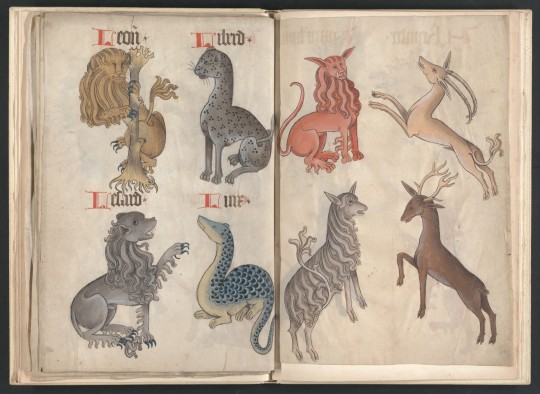


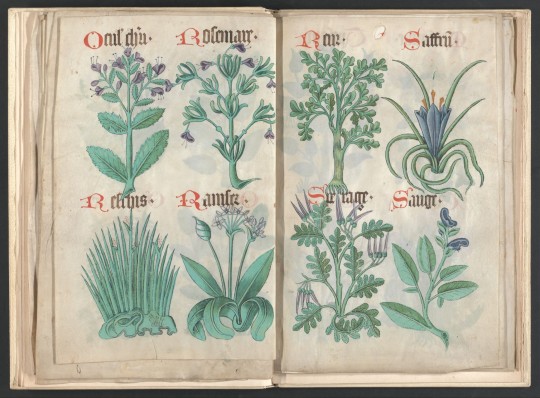

~ Helmingham herbal and bestiary.
Place oforigin/Published: Helmingham, Suffolk
Date: ca. 1500

5K notes
·
View notes
Text
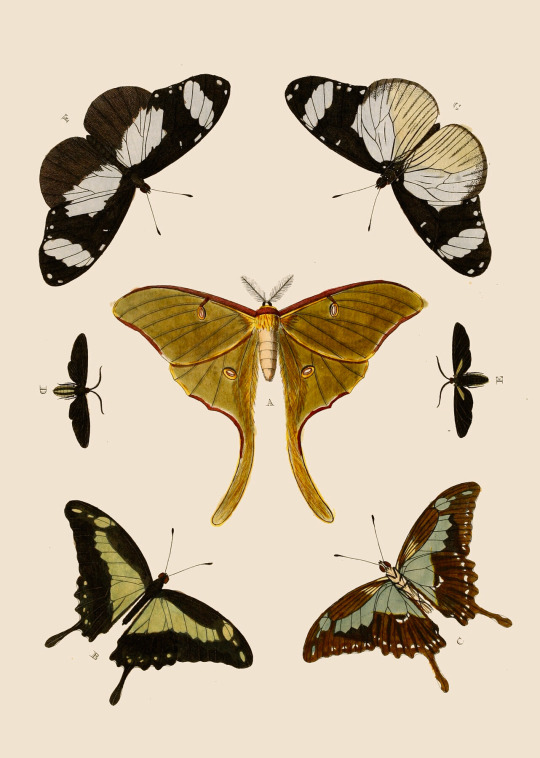
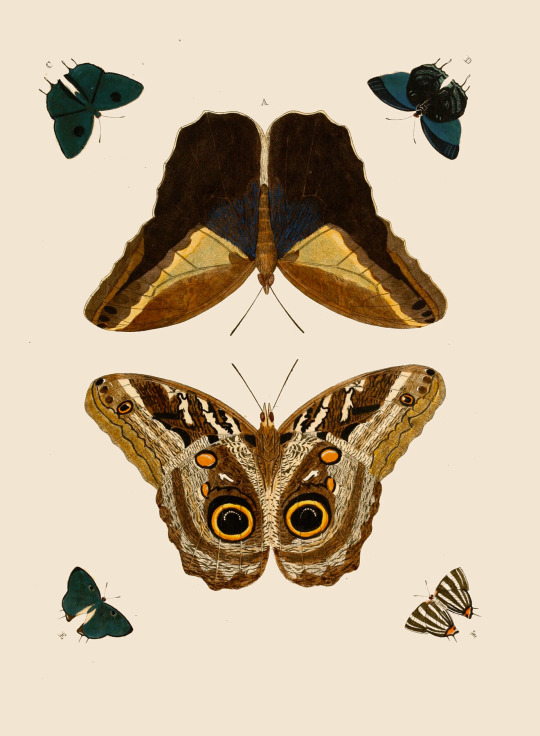

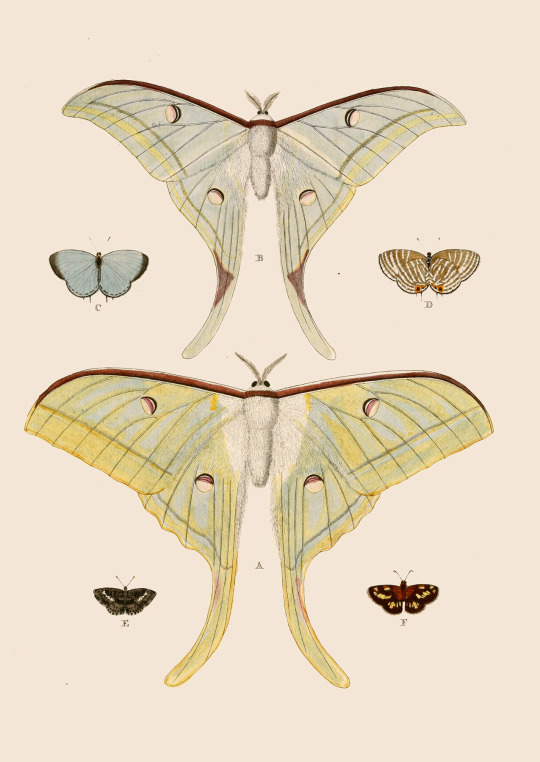




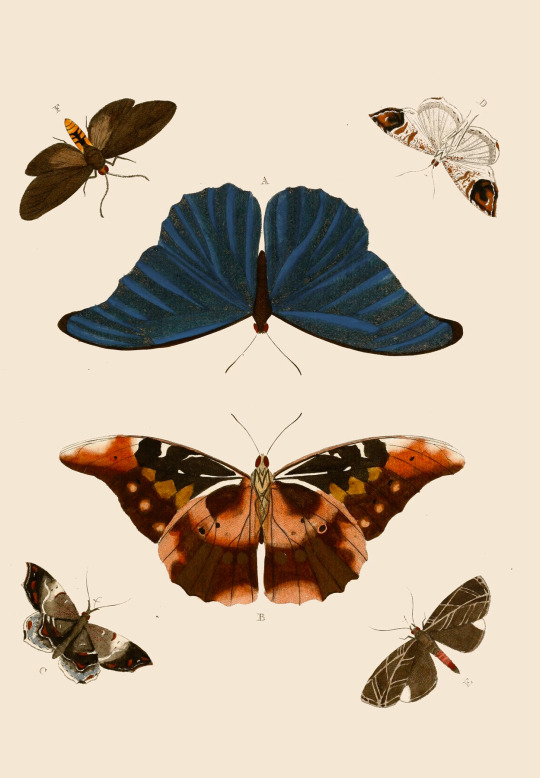
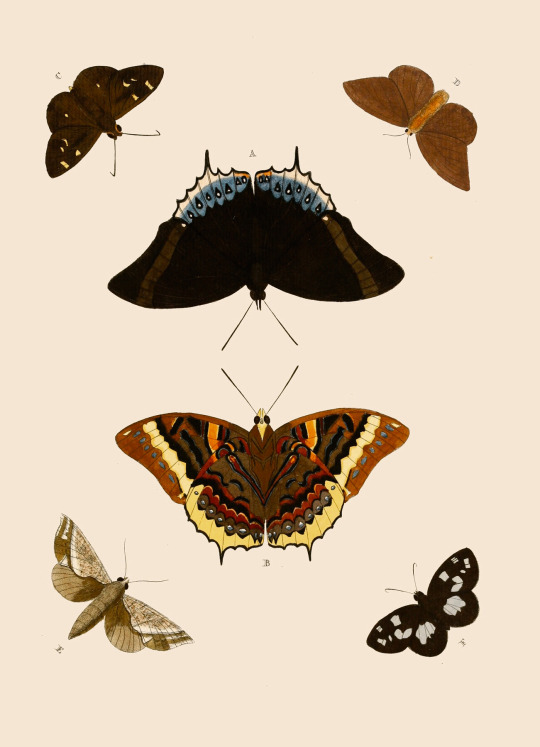
The Beauty of Moths
— by Pieter Cramer (1721–1776)
9K notes
·
View notes
Photo
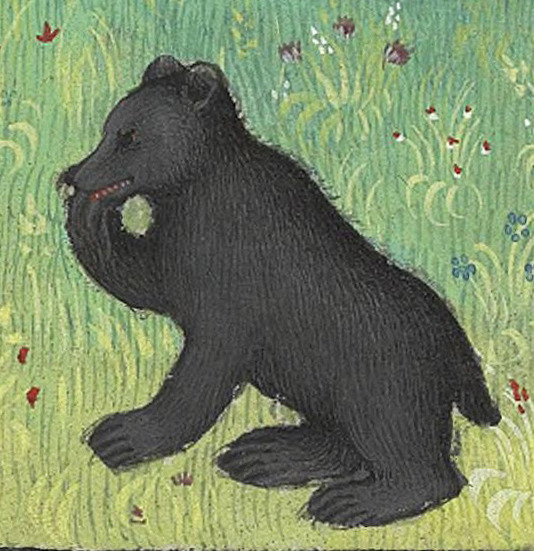


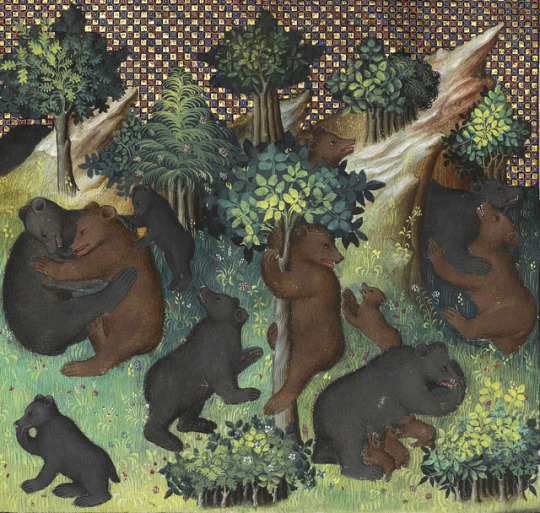
bear club
Gaston Phébus, Livre de la chasse, Paris 15th century
BnF, Français 616, fol. 27v
2K notes
·
View notes
Text




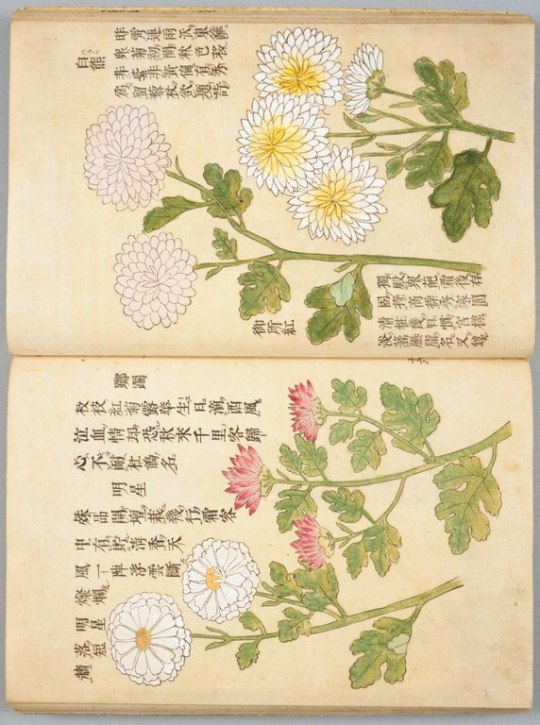



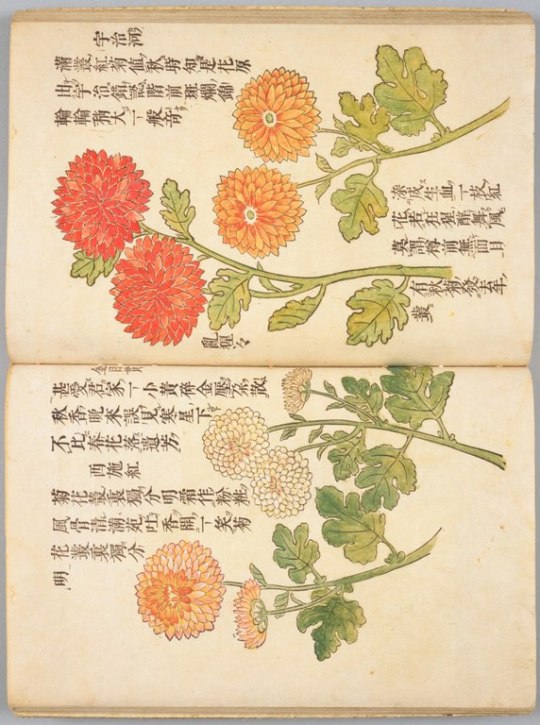

Chrysanthemums taken from 'Picture Book of Chrysanthemums.'
The text and lines are printed in black from woodblocks; the illustrations are hand painted. The book contains a preface, written in 1519 by Eikin (1447−1537), a priest of the Rinzai Zen sect, which states that the illustrations were the work of Junpo (1504−49).
Images and text information Wikimedia.
142 notes
·
View notes
Text
"A story doesn't need a theme in order to be good" I'm only saying this once but a theme isn't some secret coded message an author weaves into a piece so that your English teacher can talk about Death or Family. A theme is a summary of an idea in the work. If the story is "Susan went grocery shopping and saw a weird bird" then it might have themes like 'birds don't belong in grocery stores' or 'nature is interesting and worth paying attention to' or 'small things can be worth hearing about.' Those could be the themes of the work. It doesn't matter if the author intended them or not, because reading is collaborative and the text gets its meaning from the reader (this is what "death of the author" means).
Every work has themes in it, and not just the ones your teachers made you read in high school. Stories that are bad or clearly not intended to have deep messages still have themes. It is inherent in being a story. All stories have themes, even if those themes are shallow, because stories are sentences connected together for the purpose of expressing ideas, and ideas are all that themes are.
29K notes
·
View notes
Text
More excellent and sometimes oddly specific 18th c vocab to add to your vernacular (mostly from the Rs and Ss:)




"a girl apt to fall on her back" Is this literal or is this a cheeky way to describe a skank? I can't tell.


A rum dubber and a rum bubber walk into a tavern...



You could also talk about spilling tea and they would absolutely gather that you mean hot goss.


Which itch is which?




Also snails. (???)

Good for her!
And some words still exist today!








(petition to start saying Simple Anthony now)




1K notes
·
View notes
Photo









Contes du temps passé par Charles Perrault.
PARIS.
L.Curmer, Éditeur.
1843.
Barbe Bleue.
697 notes
·
View notes

